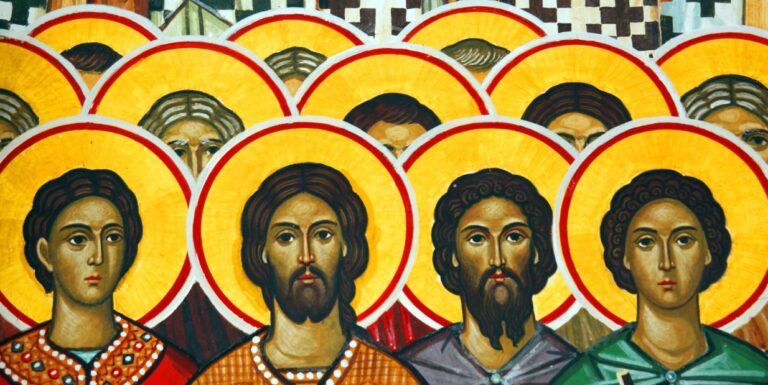
WHAT ST. CLARE CAN TEACH US ABOUT THE EUCHARIST

For those working in pastoral ministry, keeping a healthy balance in the parish is a constant task. Communities, like the individual people that constitute them, have tendencies to lean towards their preferred models and predispositions. Without correctives, these lead to imbalance. One common area of tension is between action and contemplation. Some parishes focus so much on devotions and piety that there is little energy left for caring for the poor and the building up of genuine social relationships in the parish. Others spend so much time socializing or advocating for justice that there remains only a skeletal contemplative life. Sometimes this tension plays out in ideas about Eucharistic devotion. The first group demonstrates their reverence for Christ’s Real Presence in the Eucharist by advocating for a revitalization of practices of reverence such as kneeling while receiving communion, receiving on the tongue, and promoting Eucharistic Adoration. The latter group focuses on Christ’s Real Presence in the Body of the People. They tend to eschew outward demonstrations of Eucharistic piety in favour of direct service to that Body.
In this area, today’s saint, St. Clare of Assisi, can provide a model of balance both for our community and for our personal spirituality.
The female counterpart to St. Francis, was a woman whose devotion to Christ’s presence in the Eucharist was so profound that many of her iconographers depict her carrying a monstrance. The depiction is an anachronism because Clare lived in the thirteenth century and monstrances did not come into use until two centuries later. Nevertheless, the image refers Clare’s response to an attack on the monastery at Assisi by the troops of Emperor Frederick II. Clare faced her invaders not with a usual defense, but by praying before the Blessed Sacrament for protection. Further accounts note that at the end of her life, when Clare was ill, she found great comfort looking out her window where she was able to see the tabernacle in the chapel of San Damiano and know that her Lord dwelt with her in a Real and profound way.
But Clare showed an equally strong devotion to Christ in the bodies of its weakest and most vulnerable members. She was deeply committed to serving the poorest of the poor – those who were diseased with leprosy, wounded in wars, and dying of starvation. In solidarity with these beloved poor, she and the members of the order she founded, lived a life of austerity and service. She would have agreed with St. John Chrysostom who proclaimed, “If you cannot find Christ in the beggar at the church door, you will not find Him in the chalice.” Her life was so exemplary that it was only two years after she died that she was canonized. (In fact, Pope Innocent IV, believing so deeply in her holiness, insisted the friars perform the Office for the Virgin Saints at her funeral as opposed to the normal Office for the Dead.)
What Clare can remind us is that prayerful liturgical devotion to Christ present in the Eucharist and active service to Christ present in the People of God are not competing visions. They are deeply intertwined. The more devoutly we see Christ in one, the more we ought to be led to the other. If we bow in deepest reverence before the Sacred Tabernacle but barely think to say “hello” to the walking, breathing tabernacles that are the human beings with whom we have just had communion, there is something amiss. On the other hand, without a deep sense of this Sacred Presence, we are unlikely to recognize that, in those we serve, we meet the Real, though disguised, Presence of Christ. In both instances, St. Clare demonstrates in her life, the only appropriate attitude is reverence.
Christine Way Skinner is a lay minister and author. She received a Bachelor of Arts in Theology degree from St. Francis Xavier University and a Master of Divinity from Harvard Divinity School. She is currently working on a Doctorate in Theology at St. Michael’s College in Toronto. Christine loves trying to find inclusive, compelling and creative ways to pass on the church’s 2000 year old traditions. She enjoys exploring the arts, gardening and engaging conversations. Christine’s numerous publications can be found and purchased here.


